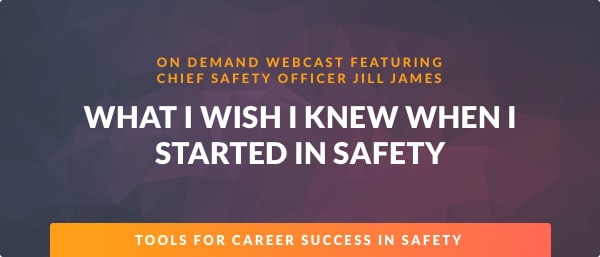Lessons from a Life in Safety: #7

Define your line.
When I accepted my position two jobs ago, my manager told me the leadership team was worried I’d be a “safety cop”.
It was a fair question. I did carry a real safety badge for much of my career. They were worried I only saw in black or white, in no shades of “business gray”.
Wanting to know if you can operate in the “gray” area is a legit question for an employer to ask and a question to ask yourself, too.
Why?
Because, our work can cover so many topics, situations, and daily fires. You can easily get overwhelmed, or feel like you should be able to do it all or must (which is impossible, unless of course you are a Safety Super Hero!).
Being a master of situational triage is a much more reasonable place to live your professional life. As safety professionals, we don’t want to see ANYTHING wrong or risky.
Yet I invite you to continuously evaluate your responsibilities alongside of the daily fires you have to put out, and apply your best safety knowledge to make a “worst-first” list.
No two lists among any of us will be the same.
You might rank according to biggest risk, or most people exposed, or worse outcome, or even by what you need to get placed on a capital budget for a year. This practice may be a bit uncomfortable, however, laying it ALL out logically will give you some breathing space and a comforting order to follow in time of chaos; it will also let your management team know you are applying some business strategy to your recommendations.
Now, for that management team who was concerned I’d be a safety cop—I told them I would do my very best to work in the “gray area”, triaging situations by risk.
However, I was quick to mention that I had certain lines I would not cross.
I mean ethical lines, instances where I would push back hard against things that crossed my standards of appropriate behavior or challenged my professional integrity.
I invite all of you to think about your ethical lines in the sand where you are now.
If you need help deciding for certain situations, ask yourself, “Is this a hill worth dying on?”
If your answer is yes, you’ve determined your line.
My line was crossed twice in that particular job.
The first time was when 7 of our employees were overexposed to carbon monoxide, all of them landing in a hospital. Before my employment with them, the company had a history of CO overexposure from a job task. I had engineered a solution that needed to be in the capital budget. Through collaboration with an operations manager, I got him to put the solution in his capital budget.
To triage the situation until permanent fix, I developed work rules, practices, and trained employees and managers on exposure avoidance. This included ventilation, proper exhaust equipment placement, and all affected employees wearing CO detectors.
The day 7 people wound up in a hospital, my line had been crossed.
I called for the immediate termination of the manager who left all the CO detectors in his truck because he didn’t think it was a big deal.
As a trusted advisor to the Operations Manager, that’s what happened.
The second time it happened, was when an employee had his fingers ripped off because of failure to fix broken equipment, after repeated requests for safeguarding action.
The Plant Manager’s response to the situation was one of victim blaming and concern over lawsuits, not remediation of hazard or care for a family of employees.
Again, my line was crossed and based on the response, I determined it was time to move on. Remember Katherine Graham’s quote, “To love what you do and feel that it matters . . . ?” I loved what I did but felt it no longer mattered at that organization.
Very recently, I was pleased to learn that particular plant manager is no longer in his job and that a person I respect greatly is at the helm—I am relieved for the employees and company.
Define your line.
Read the next post in this series, Lessons from a Life in Safety: #6
Earlier posts from this series:
Lessons from a Life in Safety: #8
Lessons from a Life in Safety: #9
Lessons from a Life in Safety: #10




